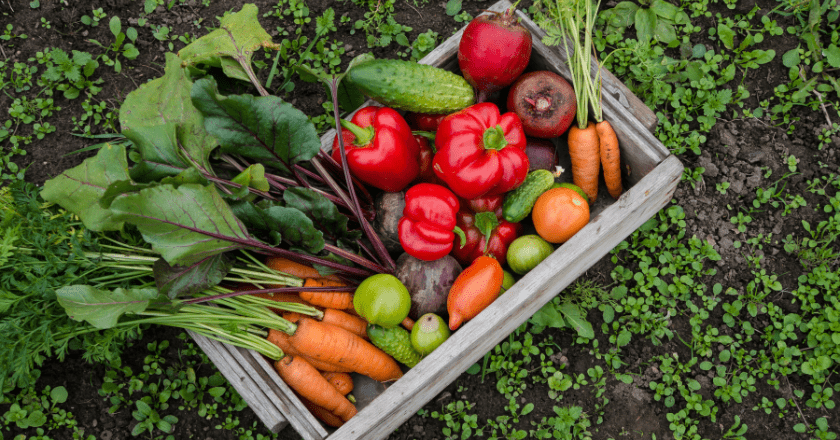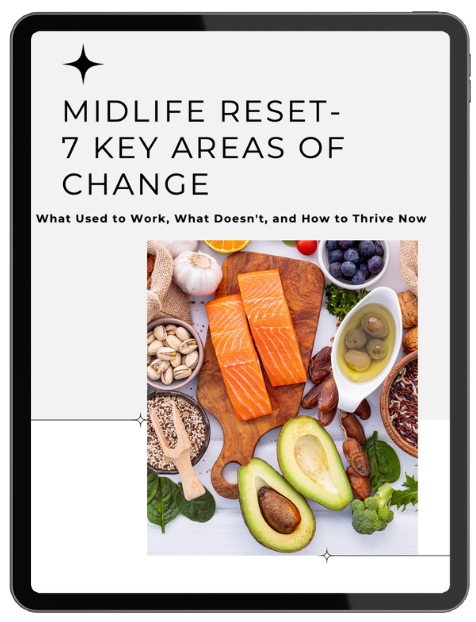Are you ready to explore the world of low-maintenance gardening? If you’re a beginner with limited time and gardening experience, don’t worry! I’ve got you covered.
In this guide, I’ll introduce you to a selection of easy-to-grow vegetables that will transform your garden into a thriving oasis of fresh produce.
Let’s ditch the complicated gardening techniques and embrace a simpler approach that fits perfectly into your busy lifestyle. Get your gardening gloves on, and let’s dive in!
Leafy Greens: Spinach, Kale, and Lettuce
Leafy greens like spinach, kale, and lettuce are the superheroes of the garden. They’re packed with nutrients and can adapt to various growing conditions. Let’s learn how to grow and harvest them with ease.
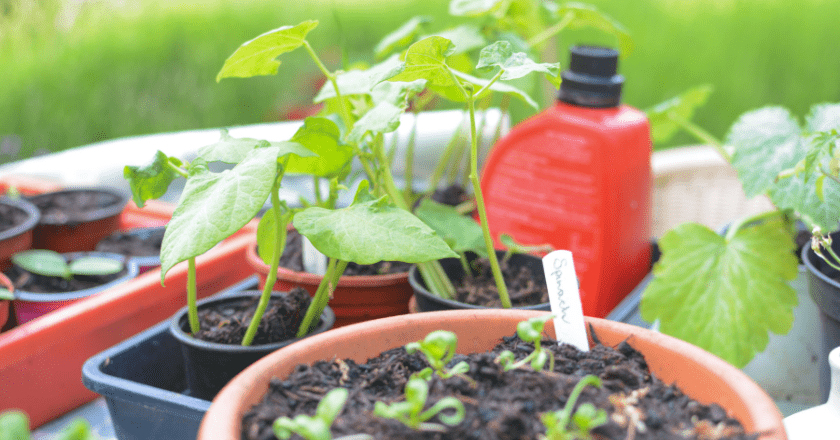
Planting
For spinach, sow the seeds directly in early spring once the soil is workable, and the threat of frost has passed. You can also sow spinach in late summer for an autumn harvest. You can start cultivating kale and lettuce indoors from seeds during the initial phase of spring or directly plant them in the garden when the soil temperature becomes optimal. You can also sow mixed leaves directly which is a nice option.
Soil and Watering
These leafy vegetables thrive in damp soil, but it is essential to avoid excessive watering, as it may result in root problems.
Find the right balance by watering deeply rather than frequently. Ensure your soil is well-drained and amend it with organic matter for optimal growth.
Sun Exposure
Leafy greens appreciate a balance of sunlight and shade. They thrive in partial shade, especially during hot summer afternoons. Aim for at least 2-4 hours of sunlight daily for good growth.
Pest Control
Regularly inspect your plants for pests. You may want to contemplate introducing advantageous insects like ladybirds or utilizing organic pest management techniques such as neem oil, insecticidal soap or nematodes.
Harvesting
Spinach can be harvested when the leaves are large enough, usually around 40-45 days after sowing. Pick the outer leaves, allowing the inner leaves to continue growing. Kale leaves can be harvested individually as they reach the desired size. Harvest lettuce by cutting the outer leaves or the entire head, depending on the variety.
No-Fail Root Vegetables: Carrots, Beets, and Radishes
Root vegetables are forgiving and perfect for beginners. Carrots, beets, and radishes are known for their simplicity and delicious flavours. Here’s how to grow them successfully:
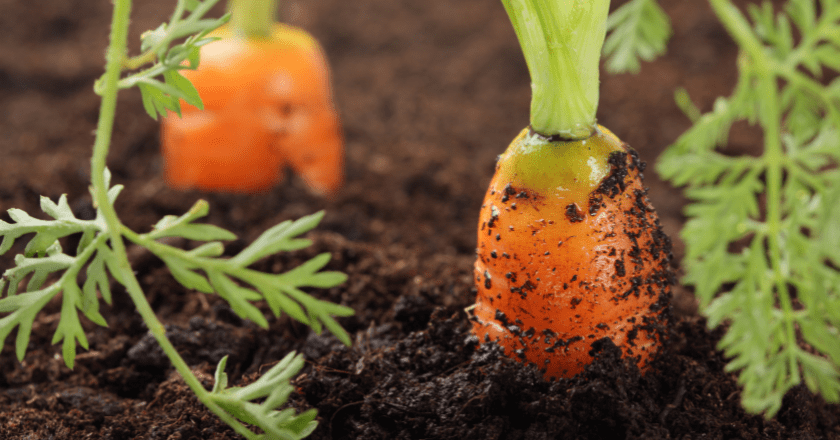
Planting
Carrots, beetroots, and radishes are directly sown vegetables, allowing you to plant the seeds directly into your garden’s soil. Start planting in early spring once the soil is workable and not too wet. You can also do multiple plantings throughout the growing season for a continuous harvest.
Soil Preparation
Root vegetables prefer loose, well-draining soil. Remove any rocks or clumps and amend the soil with organic matter to create a fertile, crumbly bed for their growth.
Watering
Ensure that the soil remains consistently moist throughout germination and as the roots develop. Avoid overwatering, as it can cause the roots to rot. Mulching around the plants helps retain soil moisture and suppress weed growth.
Harvesting
Carrots are usually ready for harvest when their shoulders are about 1 inch long. Gently loosen the soil and pull them out. You can collect beets once they have achieved the desired size, typically 1 to 2 inches in diameter.
Radishes are ready to harvest when they have reached a good size and colour.
Vining Veggies: Cucumbers and Courgette
Vining vegetables like cucumbers and courgette add freshness and vibrancy to your garden. They require minimal attention and care. Let’s discover how to grow these delightful climbers.
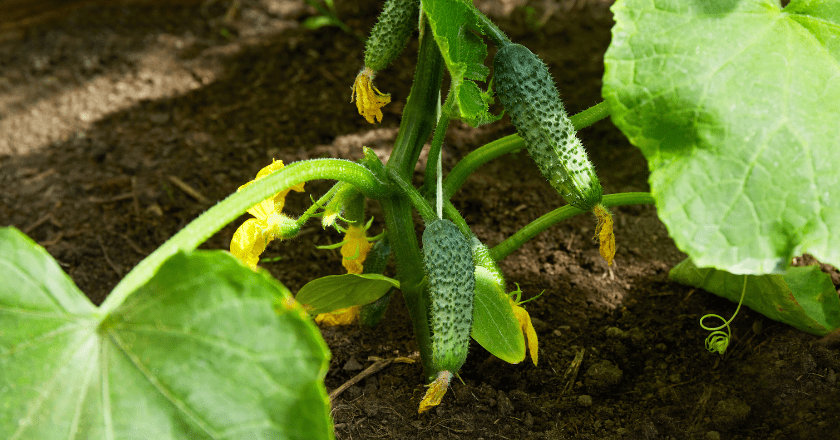
Planting
Cucumbers and courgettes are vegetables that flourish in warm weather conditions and require ample sunlight. It is advisable to commence their cultivation after the risk of frost has subsided and the soil has attained a suitable temperature. You can either directly sow the seeds in the garden or initiate their growth indoors a few weeks before the anticipated final frost.
Soil and Watering
Prepare the soil by loosening it and incorporating organic matter to improve drainage. These vining veggies prefer moist soil, so water them regularly, especially during dry periods. By incorporating a layer of mulch around the plants, you can effectively retain soil moisture and inhibit the proliferation of unwanted weeds.
Support and Trellising
Cucumbers and courgettes benefit from vertical support to save space and promote better airflow. Install trellises or stakes for the vines to climb on, keeping the fruits off the ground and reducing the risk of diseases.
Pest Control
Keep an eye out for pests like cucumber beetles and squash bugs. Regularly examine your plants and manually eliminate any pests you come across. Additionally, consider employing natural pest management techniques such as insecticidal soap or creating homemade sprays containing ingredients such as garlic or chilli pepper.
Harvesting
Cucumbers should be harvested when they are firm and at the desired size. Pick them regularly to encourage continuous production. Courgette is best harvested when small and tender, usually around 6-8 inches long. Harvesting regularly will stimulate the plant to produce more.
Bonus Tips for a Low-Maintenance Garden
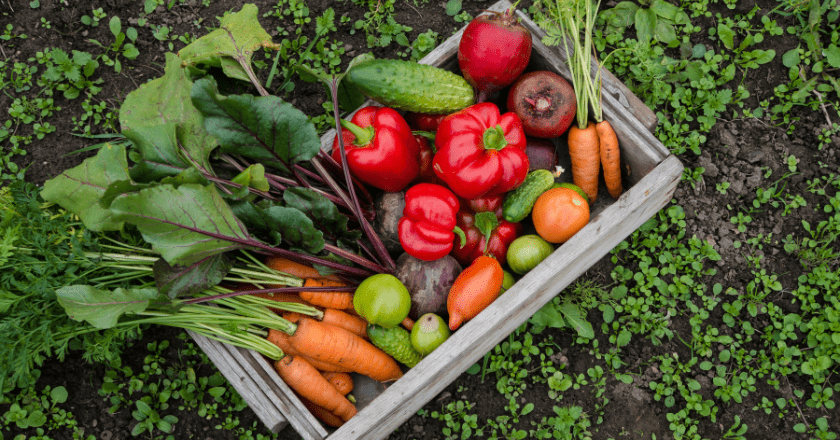
- Companion Planting: Consider companion planting to create a harmonious ecosystem in your garden. For example, planting marigolds alongside your vegetables can help repel insects. At the same time, certain herbs like basil or dill can attract beneficial insects that prey on garden pests.
- Mulching: Apply a layer of natural mulch, such as straw or shredded leaves, around your plants. Mulching helps conserve moisture, regulate soil temperature, suppress weed growth, and reduce the need for frequent watering and weed removal.
- Natural Pest Control: Instead of using harmful chemicals, explore eco-friendly pest control methods. Encourage beneficial insects like ladybirds to control pests naturally. Research organic pest control options and homemade sprays using garlic, chilli pepper, or soap.
- Embrace Experimentation: Engaging in gardening provides an opportunity for continuous learning, so do not hesitate to experiment with new methods and discover various plant varieties.
- Adapt to your garden’s unique conditions and learn from successes and challenges. Enjoy the process of discovery, and remember that gardening is a journey.
Conclusion
Congratulations! Armed with these practical tips, you’re ready to create a low-maintenance garden filled with abundant fresh vegetables. Whether you possess a compact garden or a balcony adorned with a handful of pots, you can create and nurture your green sanctuary.
By choosing easy-to-grow vegetables, understanding their planting requirements, and implementing low-maintenance techniques like proper watering, pest control, and support structures, you’ll be on your way to a successful garden. Remember to embrace experimentation and learn from your experiences.
Gardening is a rewarding journey that allows you to connect with nature, enjoy the fruits of your labour, and create a space of tranquillity and productivity. So, gather your tools, get your hands dirty, and watch your garden flourish. Happy gardening!


